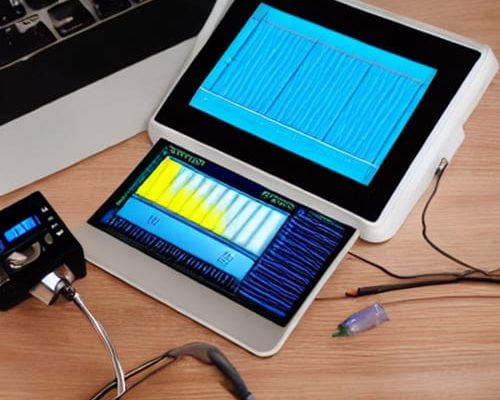Load Flow, Short Circuit, and Relay Coordination in Power System Analysis
A power system analysis is comprised of several engineering evaluations and the application of scientific analytic concepts and methodologies to offer your facility with a power system that is safe, effective, and dependable for operation under both normal and abnormal conditions.

The objective of a power system analysis is to grasp how a system will perform in different configurations and the effects of disturbances such as capacitor switching, the start of a big motor, and arc flash incident energy. The dependable operation of safety devices in the event of a short circuit or any other malfunction may also need an investigation of the power system. Studies of power systems are essential for ensuring a continuous and reliable electricity supply. Under all operational circumstances, a well-designed power system ensures dependable operation and maximizes plant availability. Poorly constructed systems result in outages, flaws, inefficiencies, and diminished security.
An average power system analysis may contain the majority or all of the following sub-studies:
- Investigation and analysis of load flow
- Investigation and analysis of short circuits
- Consideration of relay coordination
- Arc Flash Analysis & Research
- study of harmonics
- Dynamic and transient analysis
- Earthing studies
This blog will cover the first three studies. and grasp the procedures and techniques employed to conduct each inquiry.

Load Flow Study and Analysis:
A load flow analysis investigates an electrical network to determine the flow of electricity. It aids in determining the operating state of the power system and the quantity of active and reactive power generated, as well as losses, voltage, current, and power factor.
The load flow analysis consisted of the following three phases:
- Modelling networks and components for power systems
- The formulation of load flow equations.
- Using numerical approaches to solve the load and flow equations.
There are three ways for calculating power system data:
- The Gauss-Seidel System is one of the most widely employed analytical methods. This method has the advantages of being easy to implement, utilising minimal computer resources, and completing the task faster. However, further iterations are necessary owing to the delayed convergence. The quantity of iterations increases along with the number of buses.
- The more complicated Newton-Raphson approach employs quadratic convergence, which is advantageous in complex scenarios. This approach consumes fewer computing resources since fewer iterations are required to achieve convergence. It is more precise because it is less subject to complex variables such as regulating transformers and slack bus selection. Programming may be difficult and demands a substantial amount of machine memory.
- The Fast Decoupled Load Flow System is another way for load flow analysis (FDLF (Fast Decoupled Load Flow)). The primary benefit of this strategy is that it utilizes less computer memory. The computation speed is 5 times quicker than the Newton-Raphson approach, making it a preferred alternative for real-time power grid management. This program can only be used in specific circumstances. Therefore, it is more difficult to adapt it to other challenges, such as flow or system protection, in the power business.


Short Circuit Study & Analysis:
In a short circuit analysis, one or more of the following types of short circuits will be considered:
- Line-to-line fault, which happens when two phases are shorted out simultaneously.
- With a single line-to-ground failure, only one phase contacts the ground.
- Double line-to-ground fault in which both phases and the ground are simultaneously shorted
- In a three-phase fault, all three phases are shorted together.
Once the sort of issue is established, it will be easier to create a one-line diagram of the power distribution system. Calculate short circuits utilising the produced single-line diagram and an impedance diagram including numerical values for the utility source, transformer, and conductor in relation to each component’s usable voltage. Included in the calculated figures are the short circuit current, the transformer multiplier, and the full-load amps. It is vital to compare the collected data with the equipment ratings to confirm that the power distribution system is supplied with the appropriate safety measures at various places to prevent danger and downtime.
Relay Coordination Analysis:
Relay coordination is a crucial component of power system protection design, since coordination systems provide rapid, dependable, and selective relay operations to isolate the problem. Coordination analysis determines the extent to which overcurrent preventive devices are essential in the power system. It also aids in determining the appropriate requirements, configurations, and dimensions to achieve a balance between equipment security and restricted system functionality.
To model the system, data collecting procedures are performed using power system software such as ETAP (Electrical Transient Analysis Program). First, a short circuit analysis is performed, and then the fault currents at each electrical point are measured. By choosing and calibrating the protection devices, the impacts of system equipment failures are therefore minimized. Comparing the time-current characteristic curves of the protective device helps to detect regions of coordination breakdown. Adjustments are made as necessary to ensure that protective devices operate reliably and selectively.
The Advantages Power System Analysis Include:
- The reliability of the electricity grid is improved.
- Utilizing equipment with the appropriate power rating.
- Increased safety and reduction of electrical dangers
- Compliance with regulatory standards and electrical installation rules.
- Alternative strategies proposed to improve the system’s performance and durability.
- For any forthcoming inspections, the present condition of the power system is documented.
CareLabs provides Load Flow study & analysis, Short Circuit study & analysis, and Relay coordination analysis to monitor the voltage at different buses as well as the actual and reactive power flow between buses, analyze the system under various fault conditions, and determine the system’s resilience to minor and significant disturbances. Contact us or get a quotation to obtain an examination of your company’s power infrastructure in Chile. One of our support professionals will answer within 24 hours.



